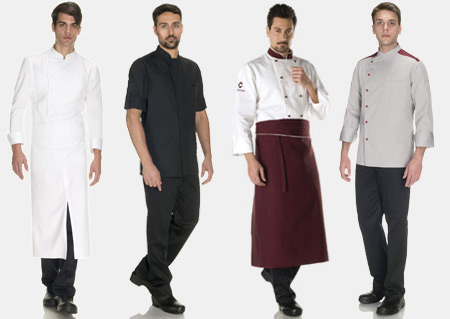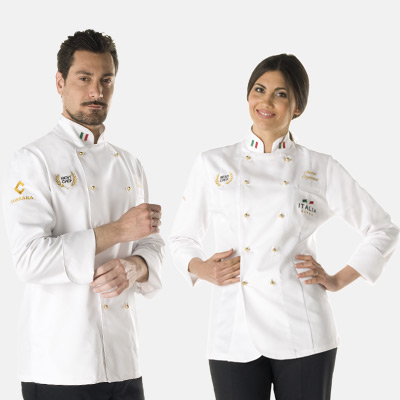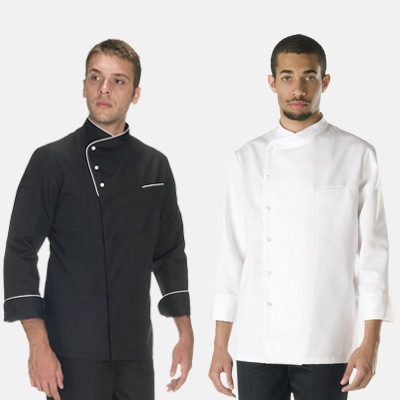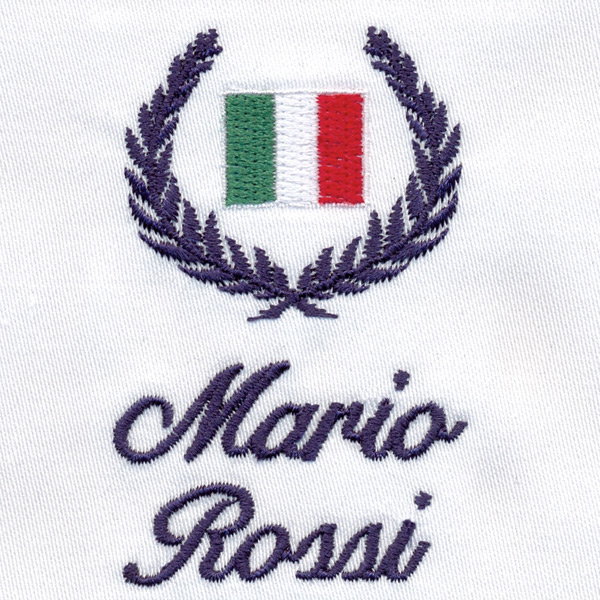The kitchen staff, from the chef to the cook, passing through all other people working there, needs professional wear compliant with the current regulations, but that is at the same time comfortable, practical and trendy.
In this article, we’ll analyse the three basic elements of the kitchen professional wear, detecting also the features of the different garments.
Kitchen professional wear: HACCP certification
The HACCP (Hazard Analysis and Critical Control Points) certification is aimed at verifying the presence of high standards as to food security. The HACCP system doesn’t replace the other provisions on food safety but is part of to a set of security measures aimed at ensuring the safety of food.
In order to have a more detailed framework on the HACCP certification system, please refer to the “Guide to the application of the procedures based on the HACCP system principles and to the simplification of the implementation of the HACCP system principles in some food companies”, drawn up by the Ministry of Health, whose PDF version can be downloaded here.
As to the professional wear for the kitchen staff, it’s important that the different garments used are suitable, clean and easy to sanitize.
This entails, as we’ll see later, the employment of fabrics that can be washed at high temperature, without getting damaged.
Kitchen professional wear: comfort and wearability
Working in the kitchen is tiring, and the figures involved have to move easily among cookers, hot plates and other equipment.
That’s why the kitchen professional wear has a very comfortable and practical wearability such as, for example, the cook’s trousers with elastic waist or the cook’s jackets with a pleat on the back, which makes the movements easier.
The production of working uniforms for chef, cooks and kitchen staff, shall consider this aspect, aiming at hard-wearing but soft tissues, which are comfortable and don’t hinder the movements.
Kitchen professional wear: aesthetics and style
The kitchen professional wear cannot set aside the look and style, even if it’s obviously less important than the one of waiters.
In spite of this, most of all in the restaurants with an open kitchen, it’s essential that the uniform matches with the style and type of image that the restaurant wants to transmit to its guests.
Even in the restaurants without open kitchen, however, it’s important to take care to these aspects, since it can happen that the chef or cook goes to the restaurant room to receive congratulations, to explain a dish or have a chat with the usual customers; so, he/she has to wear a suitable uniform.
We cannot forget also that in some restaurants some dishes are prepared by the kitchen staff directly in the restaurant room, and the same happens in the buffets, so the look of the uniforms cannot be disregarded.
Professional wear for kitchen staff
The kitchen staff includes all those who work in the kitchen, under the direction of the Executive chef.
With time, unfortunately, the diffusion of industrial machines (such as, for example the dishwasher) and of semi-finished raw materials - which require less time in the preparation of the line – reduced the number of operators. Today, the kitchen staff is generally made of an Executive Chef, a Sous Chef and the Chefs de Parties (that is the cooks which take care of a particular sector, such as appetizers, main courses, etc.)
Then, there’s the dishwasher, who washes the dishes.
Later in this article, we’ll focus on the uniforms for chefs and cooks. But now, let’s analyse the dishwasher’s uniform.
Dishwasher’s professional uniform
The dishwasher’s uniform consists of a dark working jacket and a waterproof apron, due to obvious needs deriving from the tasks carried out.
In the most modern and casual facilities, such as chains of restaurants, fast food, pizza restaurants, etc., instead of the jacket, a short-sleeved polo shirt is used, also due to its cheaper price.
To create an evenest effect in the kitchen, the apron and hat are often of the same colour both for the kitchen staff and for the cooks. Usually, they are dark and striped, blue or black.
Professional wear for chefs and cooks: jacket, trousers, apron
The words ‘chef’ and ‘cook’ are often confused and used in an improper way, as if they were synonymous, but this is not true.
The chef is the head of the kitchen, directs the kitchen staff, develops the menu and supervises the activities. Often, he/she has also managerial tasks and takes care of the provision of raw materials, of the preparation of the restaurant room and of the style details.
The cook, instead, is a more operative figure, who takes care directly of the preparation of the dishes, according to the chef’s directions.
The difference between these two figures is often replicated in the uniform, even if the base is almost the same, which is made of a jacket, trousers, apron and some accessories.
Cook’s jacket: features and models
The cook’s traditional jacket is double-breasted – so, it’s provided with two rows of buttons - and mandarin collar, even if with time it evolved and modified a little. For example, in the most modern uniforms, the cook’s jacket has only one row of side buttons.
The choice of double-breasted jacket (with double buttoning) is not only esthetical but also practical. In fact, having a double row of buttons allows to reverse the jacket when it gets a stain during the service, most of all if the cook goes to the restaurant room to speak with the guests. In fact, by changing the buttoning side, the front of the jacket is always clean.
-
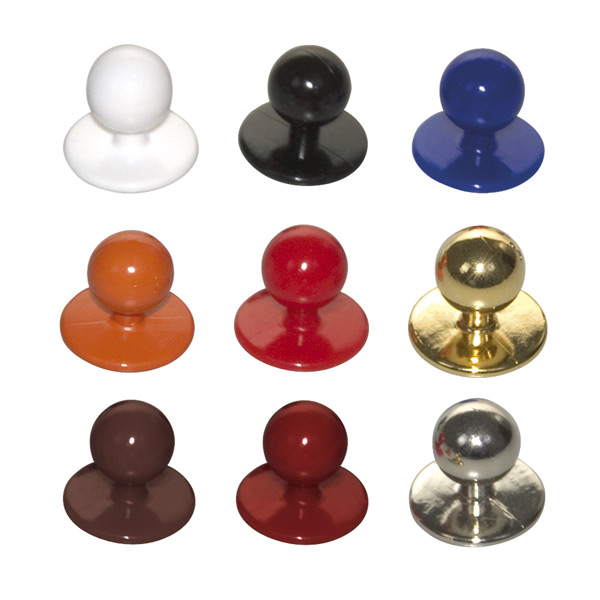
Chef’s jacket buttons
As to buttoning, in the past the cook’s jacket buttons were made of tissue, often hand-made and sewed on the garment; later on, industrial-made buttons, with a metal core covered with tissue have been used.
Recently, the buttons are made of plastic and are placed on the rear of the jacket, so that it’s easier to take it off in case of need, for example, in case of contact with the cookers’ flames.
These buttons comply with the health and safety requirements.
For the most demanding people, several companies offer the possibility to order hand-made tissue buttons as in the past. In this case, obviously, the product is more expensive.
-
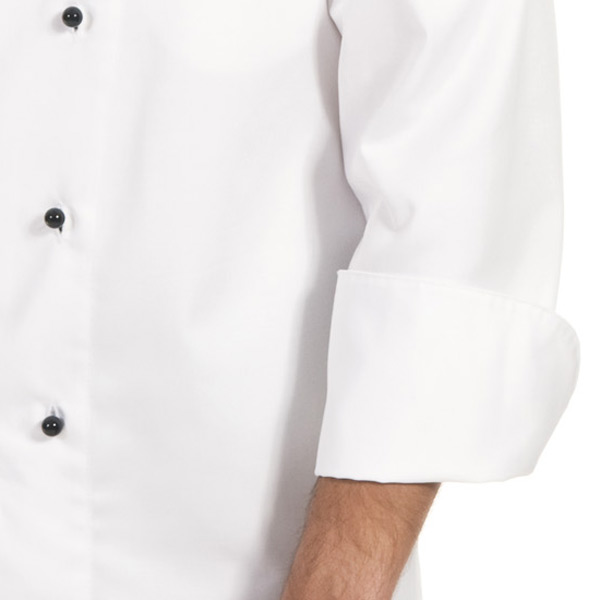
Sleeves protection for cook’s jackets
Another characterizing element of the cook’s jacket is the sleeves protection.
It’s a sort of a cuff on the sleeve, with a particular rounded shape and a mere practical role, that ensures a better protection of the forearm, that is the more exposed to the flames.
Besides, thanks to the sleeves protection, the jacket sleeves become shorter, as if they were three-quarter sleeves, avoiding the contact with food.
-
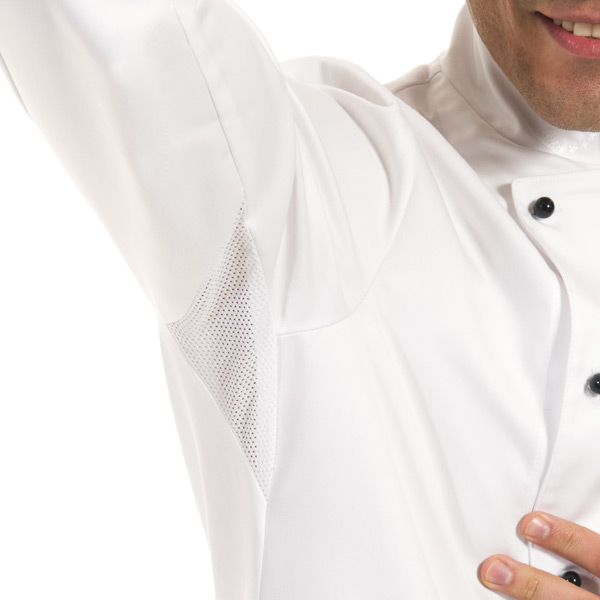
Breathable inserts in the cook’s jackets
The cook’s jackets have breathable inserts, usually under the armpits, which ensure an air exchange and a higher comfort for the users.
In the past, these inserts were realized by making 3 or 5 holes, while today a triangular micro-net insert is used, that increases and improves the heat exchange.
We are proud to point out that our company was the first one who invented this system, which is very spread now.
-
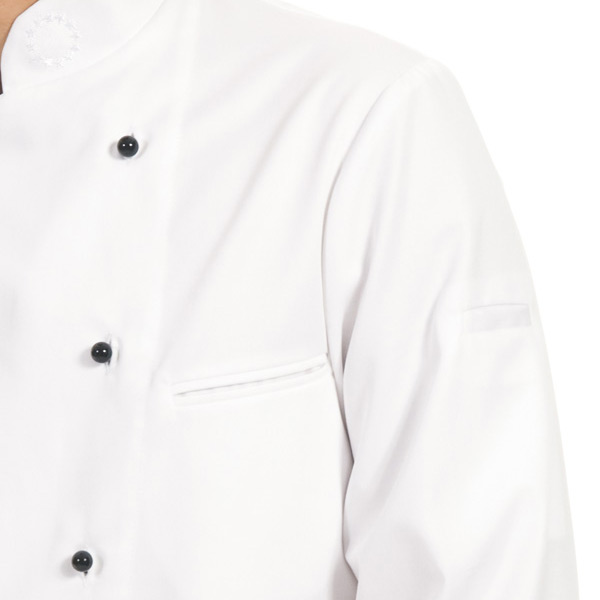
Cook’s jacket pockets
The last element which characterizes the cook’s jacket are the pockets.
Usually, two pockets are present: one in the heart zone, with a mere aesthetical purpose, and the other one on the arm, employed to place the thermometer to measure the food temperature.
Cook’s jacket colours
The traditional cook’s jacket is white, a colour which provides also a feeling of cleanness, even if this is not the only reason for which this colour has always been the most employed one.
In fact, in the past, the cook’s jacket was made of 100% pure cotton, but this fabric tends to discolour if washed at high temperatures; that’s why white was a sort of forced choice.
Todays, other fabrics are used – as we’ll see later -, but white is always a standard colour, due to practical and aesthetical reasons.
It is possible to buy coloured cook’s jackets, more young-looking, or black, which provide a touch of modernity to the uniform, especially in the restaurants which require it.
Cook’s jacket fabrics
As we said before, in the past, the cook’s jackets were made of pure cotton, which is very breathable, but is a delicate fabric, easy to wear out.
In the last years, instead, the cook’s jackets are made with technical fabrics, that ensure a better resistance, without renouncing breathability.
Our company, for example, uses a very innovative cotton blend fabric, where the polyester thread is covered by the cotton fibre. Thanks to this solution, the part of fabric in direct contact with the skin is of natural fibre, with the advantage of a polyester structure which ensures a longer wear of the garment, the possibility to wash it at high temperature and an easy ironing.
Cook’s jacket customization
Upon request, the cook’s jacket can be customized, by introducing elements such as the name of the cook or chef, the task of the member of the kitchen staff, the logo of the restaurant. Usually, the name is embroidered on the heart zone, or in other places, such as the sleeve, depending on the cook’s wish.
In the most refined jackets, the manufacturer usually introduces the embroidery of its logo, often on the right sleeve.
Cook’s trousers: models and patterns
More than the jacket, the cook’s uniform is made also by trousers.
The classical cook’s uniform employed black and white hound's-tooth check trousers, which are used very seldom nowadays.
In the last years, in fact, (grey/black or blue/grey) striped trousers or total black trousers are preferred, which are most modern solutions, nicer from an aesthetical point of view.
Unlike the colour and pattern, which evolved with time, the model is always the same, with a very comfortable wearability, which makes the movements easier, in some cases with rear elastic band and adjustable waist, to ensure the maximum comfort.
Cook’s apron: features and colours
The apron is an essential accessory for a cook’s or chef’s uniform.
Compared with the cook’s apron, which is usually without bib – admitted only for the kitchen staff – and shorter, the chef’s apron is longer and reaches the ankle.
In the last years, the model with waist band is very spread, that allows to hide the laces, providing a neater appearance.
The cook’s apron is usually white, while the one for the staff in charge of vegetables and second courses is dark. The chef’s apron can be even black, creating a contrast with the white of the jacket and a beautiful effect.
The striped apron is very recent, but it has already become a real must.
Accessories for professional kitchen wear: kitchen towel, neckerchief, shoes
More than the garments such as the jacket and trousers, the professional wear for the kitchen includes also some accessories, such as the kitchen towel, neckerchief and shoes.
The kitchen towel is a sort of heavy herringbone cloth – is some cases made of linen – which the cooks fix to the apron, by putting it into the laces, and use, without taking it out, to clean their hands, to take pots and pans from the cookers or dry the dishes.
The neckerchief, on the contrary, is a triangular handkerchief made of very light cotton that the cooks wrap around their neck, over the jacket. In the past, it was used most of all to absorb the sweat, in old and very hot kitchens. Today, since the working conditions have improved a lot, thanks to hoods, extractor fans and air-conditioners, it’s used only seldom.
The neckerchief is still used in the hotel-management schools, but it’s very uncommon to see it in the restaurants’ kitchens.
In the end, we can’t forget to mention the cook’s shoes – which are part of the safety footwear – with or without laces and safety tip, to prevent possible accidents in case a pan, a knife or other heavy tools should fall.
Conclusions
The supply of professional wear and accessories for the kitchen staff shall comply with special requirements, as explained in this guide.
Every public place equipped with a kitchen has different needs, and it’s important to satisfy them with the right professional wear.
We are at your disposal for any further clarification.
Author: Ciro Corbara

